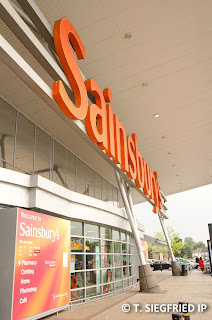As I mentioned earlier in another post, this is probably the most difficult exercise in this section. This exercise requires me to take 5 photographs that are deliberately lighter or darker than the average. The most difficult part is what is “average” mean in terms of exposure?
Say, what metering scheme are you using in your camera? If for the same screen, spot metering is telling me that the exposure is in the middle (I avoid the word “correct”), but matrix metering says that I am over-exposed, which one is right? Do you judge your exposure with light meter or with the histogram?
I think this is one of those ill-posed questions in photography. I use spot metering, so I only (at least try) getting the exposure right for my subject, while the rest of the screen can go to hell. If I change my metering to centre-weighted or matrix, I think most of my shot will be consider under/over-expose. Strictly speaking I rarely try to over or under expose my subject. Here are some examples on what I think the exercise is asking for:
1. In a screen with a lot of contrast, I can decide to expose for the shadow or expose for the highlight. There is limited dynamic range in the CCD sensor to keep both of them.
I wanted to keep the detail of the shadow, so this image over-exposed in matrix metering. The highlight is blown on the sky, but I don't care about the sky as much here.
1. In a screen with a lot of contrast, I can decide to expose for the shadow or expose for the highlight. There is limited dynamic range in the CCD sensor to keep both of them.
I wanted to keep the detail of the shadow, so this image over-exposed in matrix metering. The highlight is blown on the sky, but I don't care about the sky as much here.
There are situation in which the sky is more interesting, and I will under-expose the image in matrix metering sense to get more details there.
There are situation in which either exposure will be correct, depending what do you want to expose for. In this image, I prefer the highlight than the detail of the shadow.
2. In a screen that is mainly white, the camera tends to have it look grey-er than it is. Therefore, I try to overexpose the screen to keep it white. I notice that it doesn't have to be purely white, but a uniform cream colour will cause the camera to underexpose.
Alternatively, we will have the same problem with black background. It doesn't have to be pitch black. Even if I take this with mainly dark colour, the camera default matrix meter tends to over-expose. I need to stop down to get the exposure matches what I saw.
Finally note on this subject: “Exposing to the right” is not totally a myth, but sort of a safe bet in a data collection stand point. Question: If you preview your image on the back of the CCD to judge its exposure, are you sure that your camera CCD is correctly calibrated? I can adjust the brightness setting and the image will give me a different look. So which one is right? If by the end of the day, we are fixing the photographs up at post processing; using the histogram gives a better indication than the light meter.

















































